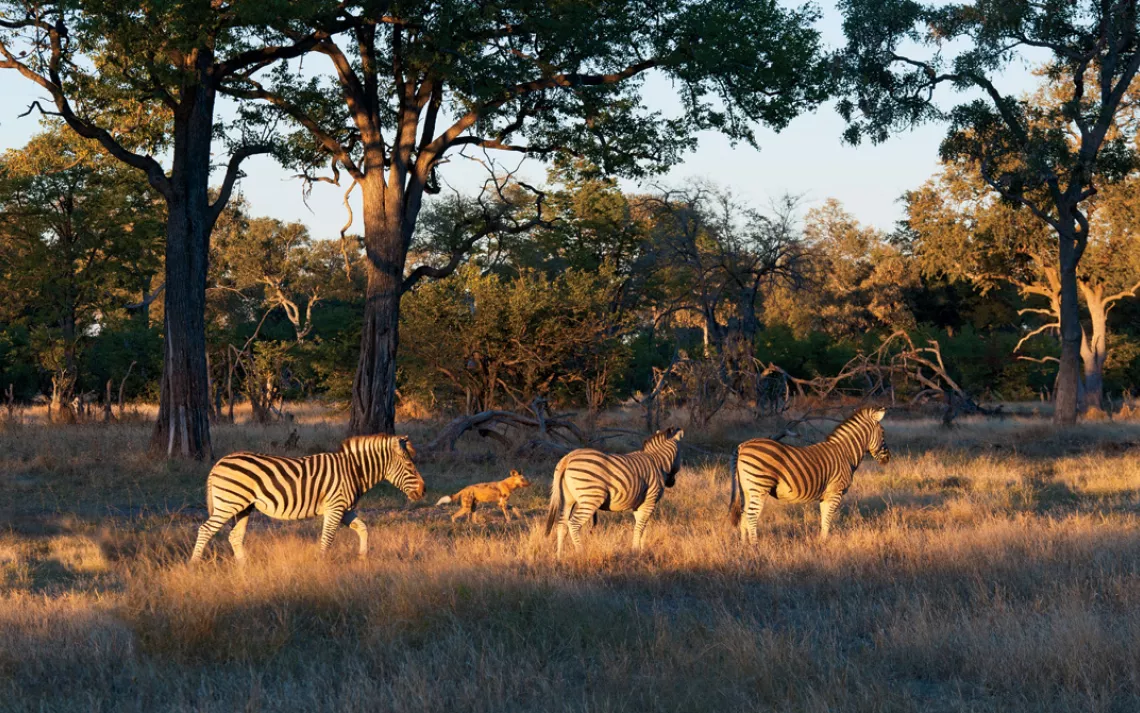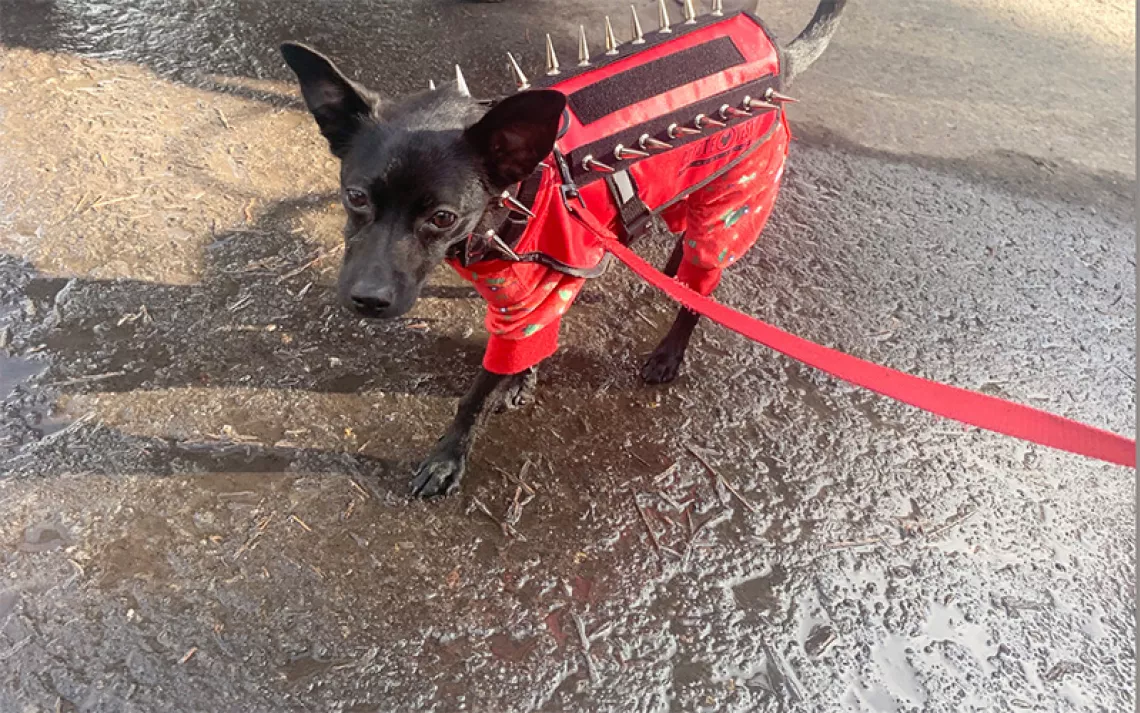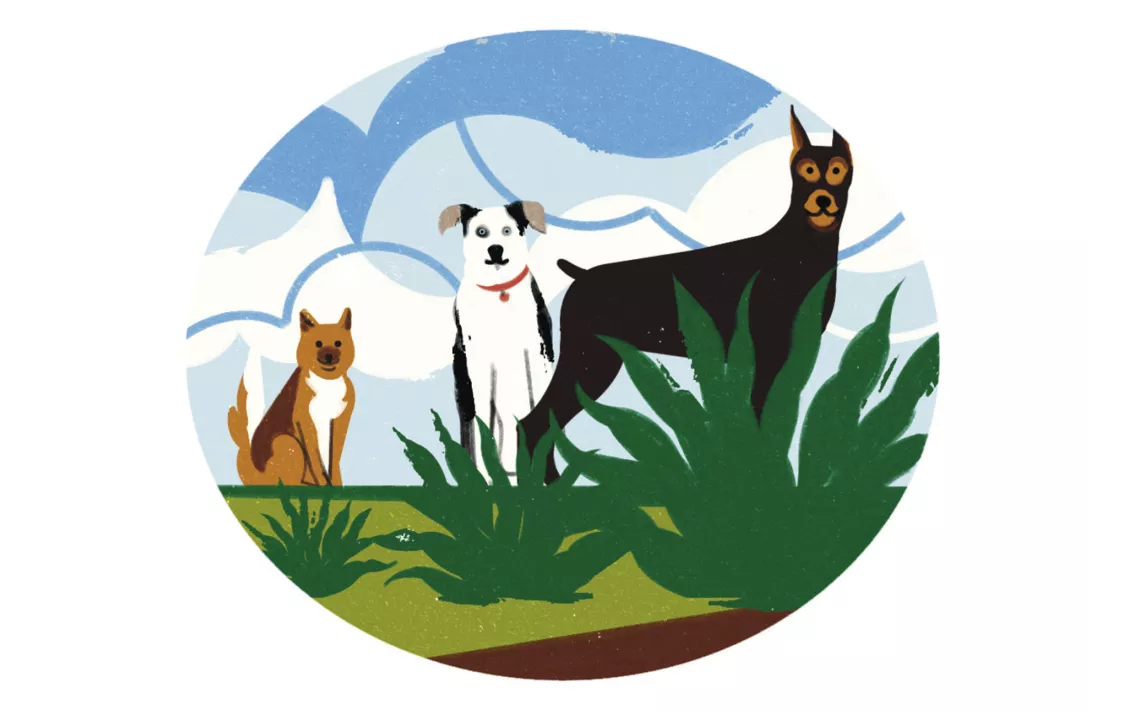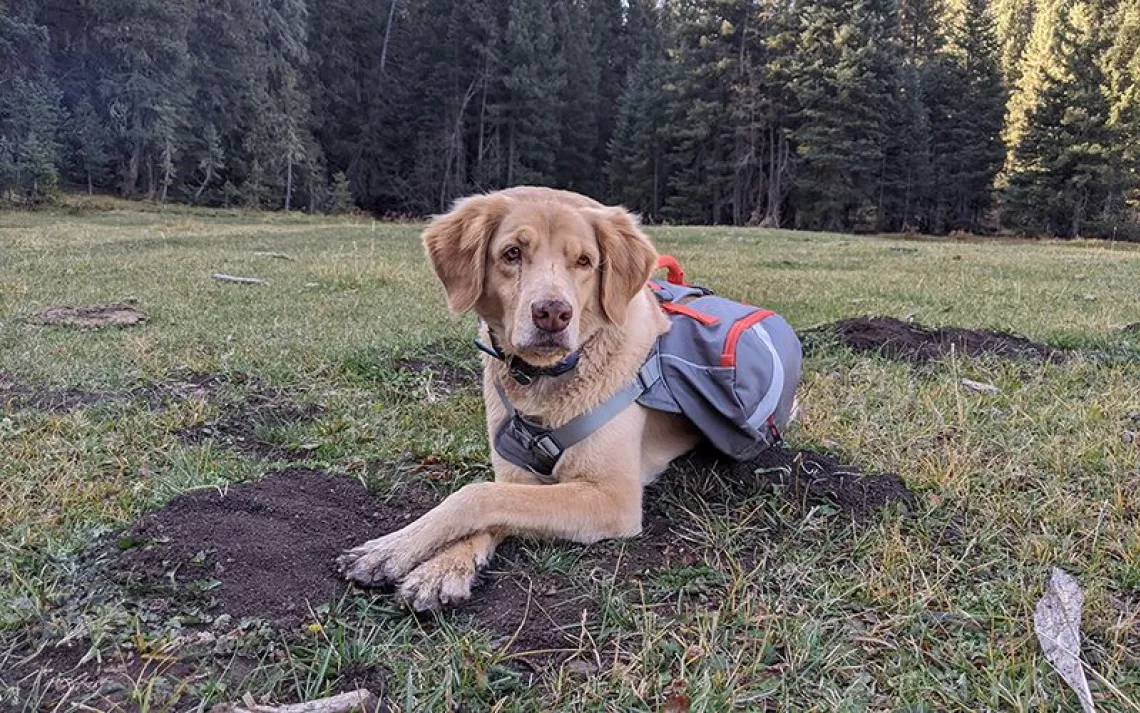Africa's Wildlife, in All Its Gory

An African wild dog stalks Burchell's zebras in Botswana's Linyanti Wildlife Reserve. | Photo by Wolfgang Kaehler/Viesti Photo
We stopped in our tracks and counted the dogs. "Over 20!" someone shouted. The pack sprinted through the woods at more than 30 miles an hour, snarling and howling, a blur of black and tan fur dappling the space between jackalberry and sausage trees. White-tipped tails swung behind them like feather dusters.
Name Dihoro, our guide, sped us in the direction they were headed. His Land Cruiser grunted and groaned over tall grass and thorny scrub. We plowed through a marshy pool that swelled from the Land Cruiser's weight. Water skimmed the window frames.
We were on a photo safari in the private Linyanti Wildlife Reserve in Botswana, where rivers and shifting faultlines have sliced channels, carved lagoons, and cracked open grassland marshes.
I came to spot elephants and lions. But it was the African wild dogs that Dihoro eagerly trailed. "They're highly intelligent and very social," he said, speeding past giraffes, baboons, and springbok. "Fewer than 7,000 left. It's rare to see them." Had I really traveled more than 8,000 miles to see angry dogs? I'd grown up with mongrel pooches, but the pack we'd just found looked programmed to kill. I realized I liked my wild animals to at least appear warm and cuddly.
We saw a lone dog ahead. His colorful coat explained his Latin name—Lycaon pictus, or painted wolf. Snout pointing skyward, he scanned for scent. His face and chest were smeared with fresh blood. "He's probably taken down an animal and is going to gather the other pack members to feed on it," Dihoro whispered.
He ran off. We followed. I braced for the inevitable. A pack will kill and consume its prey in minutes to prevent freeloaders like hyenas from stealing. I hoped that by the time we found the dogs, the gory stuff would be over.
Flying fur and gnashing teeth flashed into view. A dozen dogs hunched over an impala carcass, tearing meat from its rib cage. Some of the smaller dogs were diving between the bigger ones, rumps waving in the air, to join the feast. Off to the side, a couple of older dogs regurgitated their meals into the mouths of whining pups. I hadn't expected such cooperation among predators.
Occasionally, a dog would glance into our vehicle, panting with the mania of hunger not yet satisfied. One of them locked eyes with me. No aggression whatsoever. Once the bones were picked, the dogs quieted down, sated stomachs stretched around their contents.
My own blood pressure restored, I pulled out my notebook. I had a new entry for the list of animals I care about deeply.
This article appeared as "Africa's Wildlife, in All Its Gory" in the January/February 2016 print edition of Sierra.
 The Magazine of The Sierra Club
The Magazine of The Sierra Club







